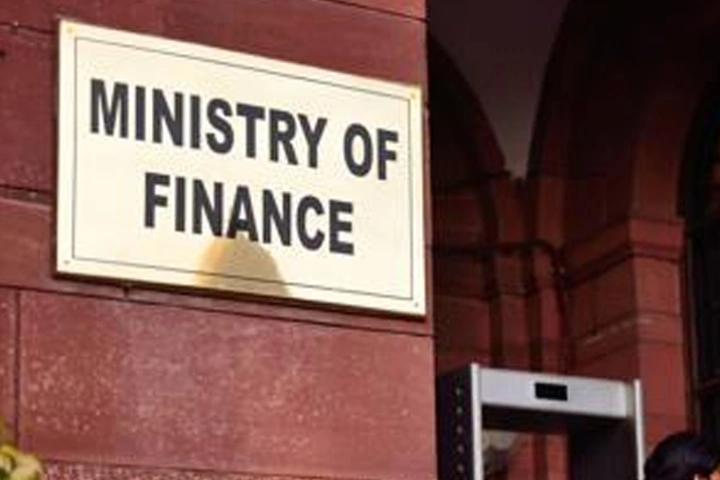India’s strong economic performance, borne out by recent data releases, stands out amid sluggish global growth, the Department of Economic Affairs, Ministry of Finance in its monthly economic review report released on Friday.
Building on the momentum from the previous two quarters, India’s economic growth surged to a six-quarter high in Q3FY24, exceeding 8 per cent for the third consecutive time.
The higher second advance estimate for economic growth in FY24, released after about eight weeks from the first estimate incorporating more updated information on the recent economic dynamics, has bolstered the optimism about the economy.
The DEA report says that many non-governmental expert agencies have also upped their growth projections. While consumption remained steady, robust investment activity is driving growth. The continued focus on public investment seems to have crowded in private investment. Strong aggregate demand has stirred manufacturing and construction activities and accompanying professional, financial and real estate services.
India’s external account is stable despite persistent geopolitical headwinds. Merchandise trade deficit is narrowing, fuelled by falling international commodity prices.
Services exports remain strong, resulting in an increase in net services receipts. Supported by India’s strong macroeconomic fundamentals, foreign portfolio investors have turned net buyers in February while foreign direct investment inflows are still awaiting momentum.
The number of new project announcements remained stable, keeping India among the top 5 destinations for global greenfield projects. Retail inflation remained stable and within the target range for the sixth consecutive month.
Driven by strong domestic growth and benign global commodity prices, core inflation is declining continuously. Timely and multi-frontal supply-side measures by the Government have also helped the cause of price stability.
Three recent data releases portray reassuring trends in employment. The latest results of the Periodic Labour Force Survey indicate a decline in the unemployment rate coupled with rising labour force participation in 2023.
RBI’s KLEMS database updated up to 2021-22 points to a revival of the structural transformation of the Indian labour market, with the buoyant non-farm sector being able to absorb the labour force freed from farm operations.
In the organised manufacturing sector, the results of Annual Survey of Industries for FY21 and FY22 showcased Indian manufacturing sector’s resilience and its turn-around in employment post the pandemic.
Strong growth accompanied by stable inflation and external account and progressive employment outlook help the Indian economy close the current financial year on a positive note. There are headwinds like indications of hardening crude oil prices and global supply chain bottlenecks to trade. Nonetheless, India, on the whole, looks forward to a bright outlook for FY25.
The GDP growth estimate for FY24 has been revised upwards from 7.3 per cent to 7.6 per cent in the second advance estimates, highlighting the enduring strength of the Indian economy.
India grew above 8 per cent for three consecutive quarters, reaffirming her position as a standout performer amidst sluggish global growth trends. Various agencies echo a similar sentiment revising the growth estimates of India FY24 closer to 8 per cent.
In line with the official statistics and the upward revision of various growth estimates, SBI Research and Moody’s expect GDP growth for FY24 to be 8 per cent. Fitch and Barclays raised their growth forecast for FY24 to 7.8 per cent. The inclination towards 8 per cent growth for FY24 stems from the fact that the 7.6 per cent GDP growth for FY24, as estimated by the CSO, means an implied growth of 5.9 per cent growth for Q4 FY24, which is likely to be an understatement given the continuing momentum of the economy.
Driven by the Government’s thrust on capex which has continued to crowd in private investment, Gross Fixed Capital Formation (GFCF) at constant prices registered a growth of 10.2 per cent in FY24 and 10.6 per cent in Q3 of FY24.
There has been a broad-based pick-up in investment, as reflected in the rising share of GFCF, which increased from 29.6 per cent in FY22 to 31.3 per cent of GDP in FY24. According to the review report the government’s effective capex is expected to be 4.6 per cent of GDP in FY25, as per the interim budget, which is a substantial 200 basis point increase from 2.6 per cent of GDP in FY20.
With the continued impetus to capex in the last few years, the crowding-in is evident from the increasing investment rate of the private corporate sector. Resonating the same, RBI’s State of the Economy report states that the government’s thrust on capex has started to crowd in private investment as high corporate profitability quarter after quarter has begun to induce the creation of fixed assets.
The Government’s capex strategy is not limited to physical infrastructure; it also prioritizes the technological landscape. To catalyse AI innovation via a public-private partnership, the government has approved the “India AI Mission” with a budget outlay of Rs10,300 crore for building computing infrastructure, developing indigenous AI capabilities, attracting AI talent, and financing AI start-ups.
Recognizing the importance of the technological ecosystem, the government’s measures to address the challenges of high costs of chip manufacturing and Graphical Processing Units are expected to incentivize the private sector and start-ups to invest in AI innovation, semiconductors, and technology capabilities. The focus on infrastructure and technology is expected to propel India to stay on the curve of technological innovation and solidify its position in global supply chain.
The steady consumption demand is backed by resilient urban demand conditions. The recovery in rural consumption demand is expected to be strengthened by the forecast of a normal monsoon2 in FY25.
The latest Household Consumption Expenditure Survey (HCES) 2022-2023 results suggest inclusive growth in the past decade, also reiterating improved rural demand scenarios.




















